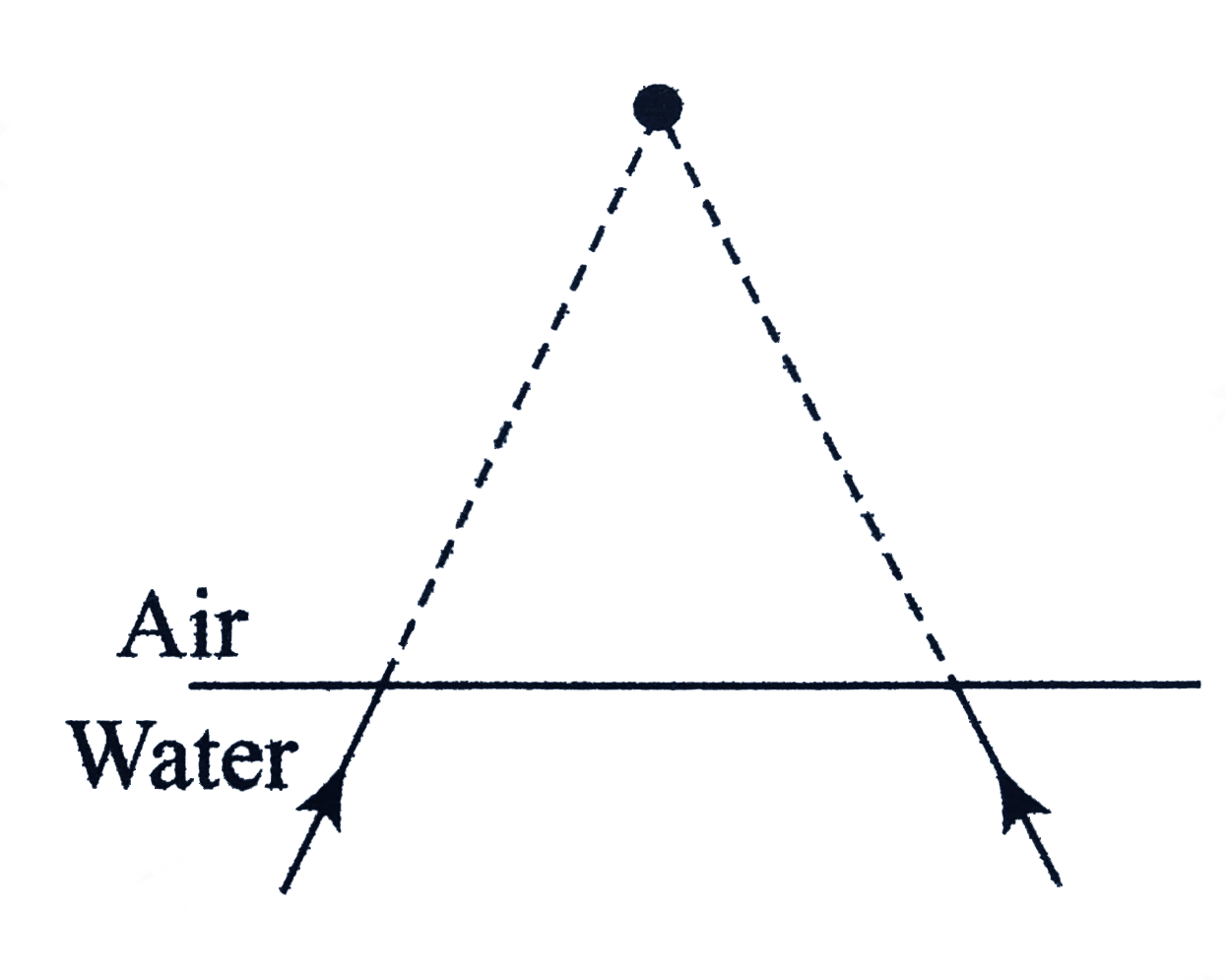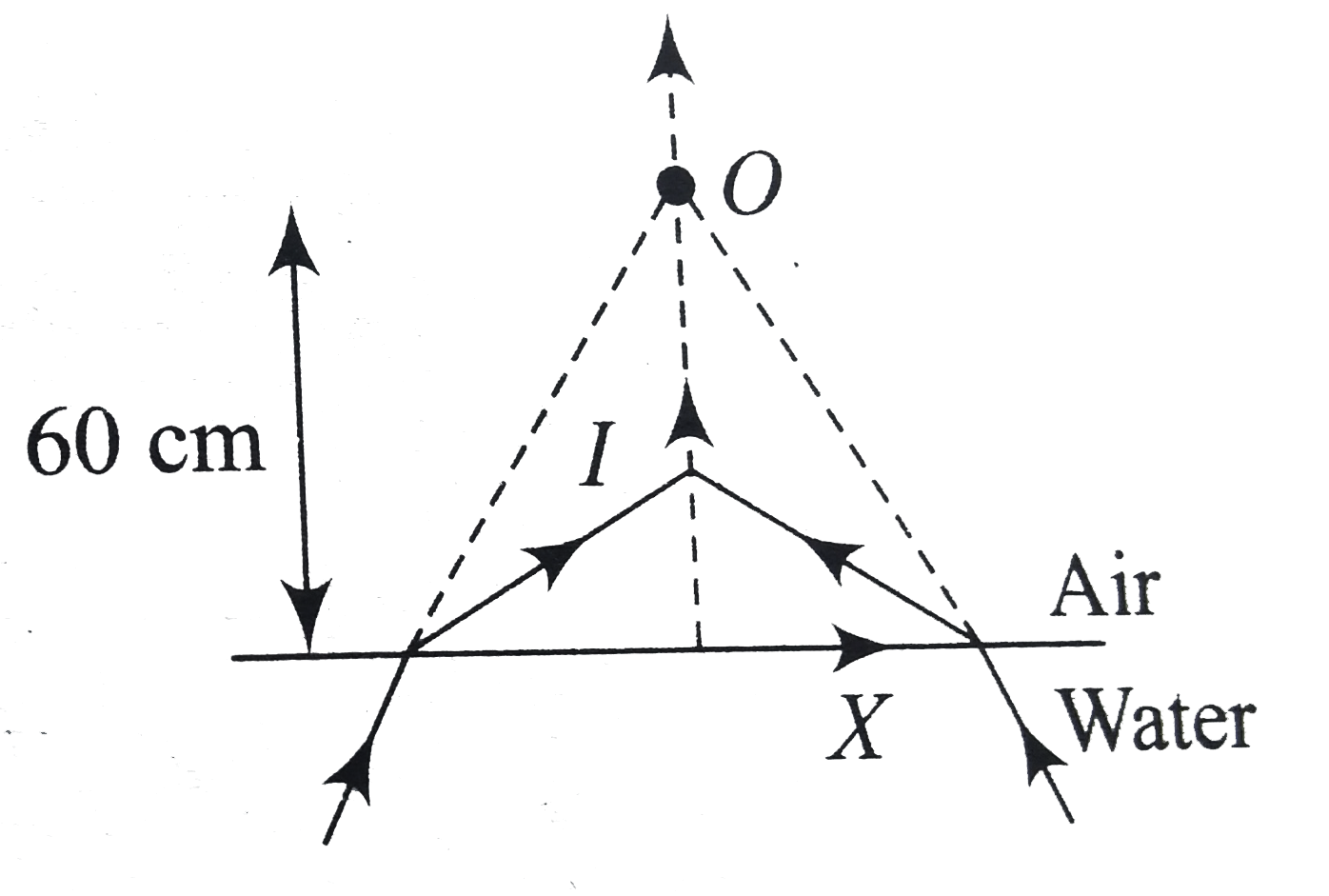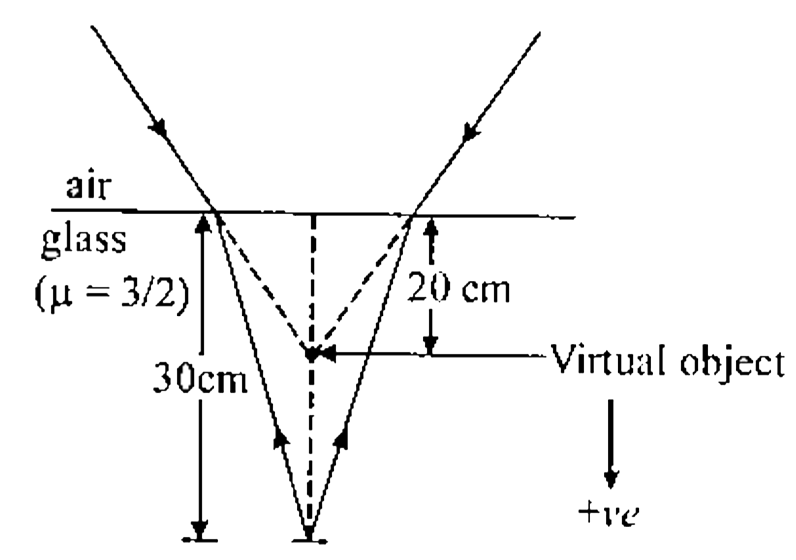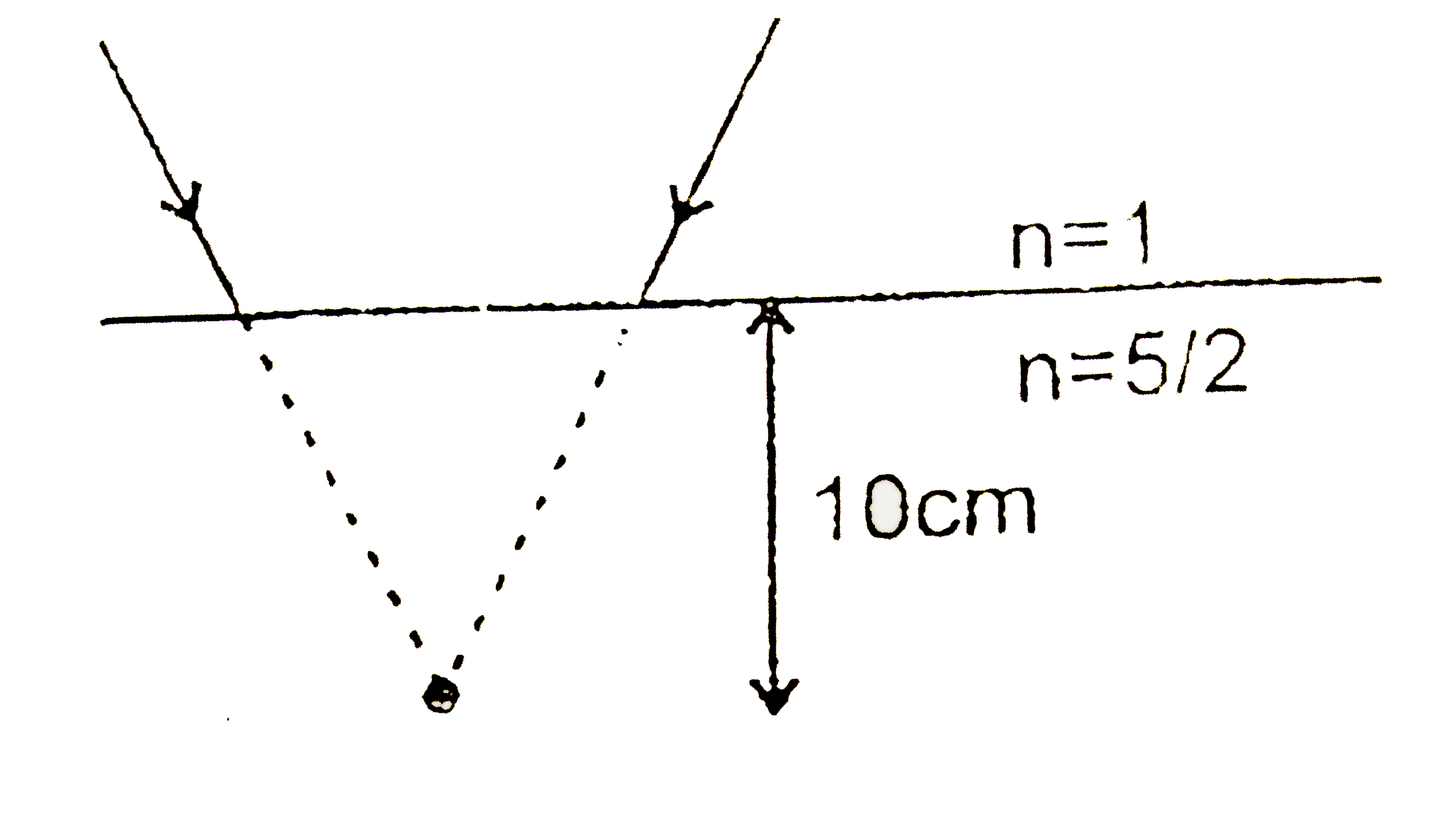A converging set of ray, traveling from water to air, is incident on a plane interface. In the absence of the interface, the rays would have converged to a point O, 60 cm above the interface. However, dur to refraction the rays will bend. At what distance above the interface will the rays actually converge?

A ray of light now travels through water, across the interface through air and converges to form an image at I. Here, medium 1 is water and medium 2 is air.
d1=+60cm,μ1=43,μ2=1
As μ1d1=μ2d2 or d2=μ2μ1d1, we get
Thus, the i mage is formed 45 cm above the interface.

Topper's Solved these Questions
- BOOK - CENGAGE PHYSICSCHAPTER - GEOMETRICAL OPTICSEXERCISE - Exercise1.412videos
GEOMETRICAL OPTICS
- BOOK - CENGAGE PHYSICSCHAPTER - GEOMETRICAL OPTICSEXERCISE - Exercise1.522videos
GEOMETRICAL OPTICS
- BOOK - CENGAGE PHYSICSCHAPTER - GEOMETRICAL OPTICSEXERCISE - Exercise1.220videos
GEOMETRICAL OPTICS
- BOOK - CENGAGE PHYSICSCHAPTER - FRICTIONEXERCISE - QUESTION BANK1videos
FRICTION
- BOOK - CENGAGE PHYSICSCHAPTER - GRAVITATIONEXERCISE - Question Bank39videos
GRAVITATION
Similar Questions
A converging bundle of rays travel from water (refractive index 4/3 ) to glass (refractive index 1.5) through a convex interface of radius 16cm. In the absence of the interface, The rays would have converged to a point 32 cm from the pole of the interface. Where will the rays actually meet after refraction?
View SolutionA converging beam of light rays incident on a glasa-air interface as shown in figure. Find where these rays will meet after refraction.
 View Solution
View Solution
Knowledge Check
- Question 1 - Select One
The refractive index of water relative to air is 5/3. A ray of light passing from water into air is incident at the interface at an angle of 32∘ with the normal. What angle does the refreacted ray make with the normal?
A61∘2'B8∘C62∘2'D60∘1' - Question 2 - Select One
A ray of light is incident on the interface between water and glass at an angle i and refracted parallel to the water surface, then value of μg will be
 A(4/3)siniB1siniC43D1
A(4/3)siniB1siniC43D1 - Question 3 - Select One
A ray of light is incident on the interface between water and glass at an angle i and refracted parallel to the water surface, then value of μg will be
 A(4/3)siniB1siniC43D1
A(4/3)siniB1siniC43D1
In the given figure rasy incident on an interface would converge 10cm below the interface if they continues to move in straight lines without bending. But due to refraction, the rays will bend and meet some where else. Find the distance of meeting point of refracted rasy below the interface, assuming the rays to be making small angles with the normal to the interface.
 View Solution
View SolutionA ray of light travelling in air is incident on the surface of glass slab at an angle of 40∘. If the ray is deviated through 18∘, determine critical angle for the glass-air interface.
View SolutionA converging beam of rays in incident on a diverging lens. Having passed through the lens the rays intersect at a point 15cm from the lens. If the lens is removed, the point where the rays meet, move 5cm closer to the mounting that holds the lens. Find the focal length of the lens.
View SolutionWhat happens when a ray of light is incident normal to the interface between two media? Draw the corresponding neat and labelled diagram.
View SolutionLight ray is travelling from a medium of refractive index μ in to air. Angle of incidence at the interface is 53∘. Light ray is found to suffer total internal reflection. Select possible values of μ from the following :
View Solution

